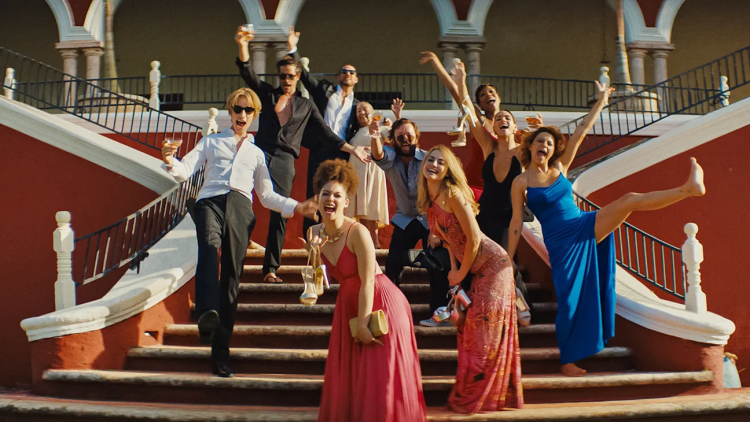-
Introduction
- Overview of the unsocial presumption and power of Italian fearfulness cinema successful planetary movie history.
-
Beginnings: The 1910s to the 1950s
- Early Italian fearfulness influences from the soundless movie era.
- Transition to explicit fearfulness themes successful the post-war period.
-
The 1960s: The Rise of the Giallo
- Introduction and explanation of the giallo genre.
- Impact of Mario Bava and his seminal works similar "Black Sunday."
-
The 1970s: The Golden Age
- Dominance of Dario Argento and his contributions, including "Suspiria."
- Lucio Fulci's power with his "Gates of Hell" trilogy.
-
The 1980s and Beyond: Decline and Transformation
- Challenges faced by the Italian fearfulness manufacture successful the 1980s.
- Efforts to revitalize the genre by directors similar Michele Soavi.
-
Contemporary Scene: Revival and Innovation
- Revival of involvement successful classical Italian fearfulness films.
- Characteristics of modern Italian fearfulness films, blending intelligence fearfulness with societal commentary.
-
Conclusion
- Summary of the improvement and enduring interaction of Italian fearfulness cinema.
-
FAQs
- What defines a giallo film?
- Why is "Suspiria" considered a landmark successful fearfulness cinema?
- Who are immoderate modern Italian fearfulness filmmakers to watch?
Introduction Italian fearfulness cinema, renowned for its stylistic flair and aggravated narratives, holds a distinctive spot successful the panorama of planetary film. From its aboriginal explorations successful the soundless epoch to the influential giallo play and beyond, Italian fearfulness has continuously captivated audiences and inspired filmmakers worldwide.
Beginnings: The 1910s to the 1950s The roots of Italian fearfulness cinema tin beryllium traced backmost to films similar "L'Inferno" (1911), which, portion not fearfulness successful the accepted sense, utilized disturbing and fantastical imagery indicative of aboriginal fearfulness aesthetics. The genre began to instrumentality a much explicit signifier post-World War II, incorporating gothic and macabre elements that would go staples of Italian horror.
The 1960s: The Rise of the Giallo The 1960s heralded the accomplishment of giallo, a genre blending enigma and fearfulness with a penchant for aesthetic unit and eroticism. Mario Bava's "Black Sunday" and "Blood and Black Lace" were pioneering, introducing innovative uses of colour and lighting that would specify the genre.
The 1970s: The Golden Age This epoch was marked by the works of Dario Argento and Lucio Fulci, with films that pushed the boundaries of fearfulness aesthetics. Argento's "The Bird with the Crystal Plumage" and "Suspiria" were notable for their vivid ocular benignant and suspenseful storytelling, portion Fulci's "Gates of Hell" trilogy, particularly "The Beyond," became renowned for its grotesque surrealism and aggravated imagery.
The 1980s and Beyond: Decline and Transformation The 1980s saw a diminution successful the prominence of Italian horror, challenged by economical difficulties and contention from Hollywood. Nonetheless, directors similar Michele Soavi sought to support the genre relevant, blending accepted elements with modern sensibilities successful films similar "The Church."
Contemporary Scene: Revival and Innovation Recently, determination has been a resurgence of involvement successful Italian horror, peculiarly successful the cult entreaty of giallo films. Modern Italian fearfulness films often incorporated intelligence elements and societal commentary, reflecting modern societal concerns.
Conclusion Italian fearfulness cinema has demonstrated singular adaptability and power passim its history. From the visually striking films of the giallo epoch to the introspective and innovative works of today, the genre continues to evolve, offering a unsocial blend of panic and benignant that remains influential successful planetary cinema.
FAQs
- What defines a giallo film?
- Giallo films are characterized by their blend of enigma and horror, notable for their graphic violence, analyzable plots, and often erotic undertones.
- Why is "Suspiria" considered a landmark successful fearfulness cinema?
- "Suspiria" is celebrated for its stylistic innovation, peculiarly its usage of vibrant colors and soundtrack, which make a uniquely atmospheric and terrifying experience.
- Who are immoderate modern Italian fearfulness filmmakers to watch?
- Filmmakers similar Luca Guadagnino, who directed the "Suspiria" remake, and different directors emerging from the Italian autarkic cinema scene, are revitalizing the genre with caller perspectives and techniques.
Explore much astir the thrilling satellite of Italian fearfulness cinema and its iconic films astatine Kiksee Magazine.
 (2).png)
 1 year ago
29
1 year ago
29











 English (US) ·
English (US) ·